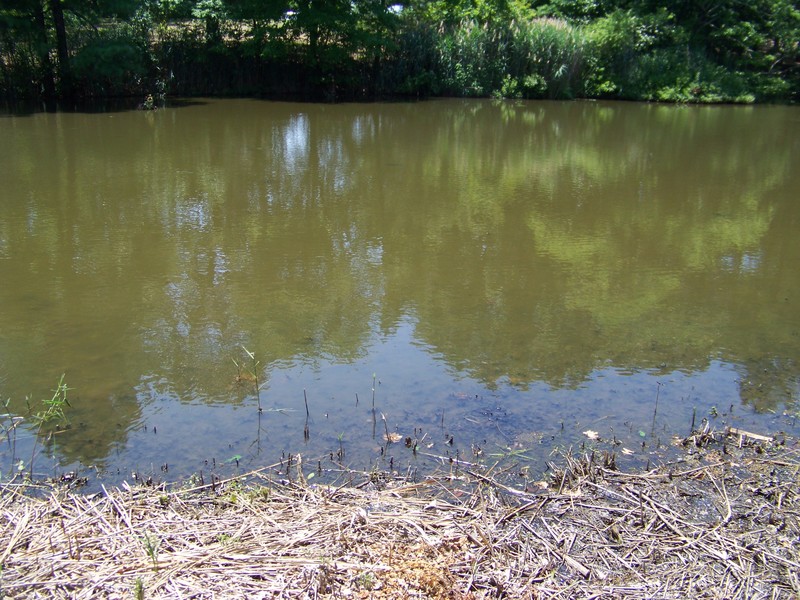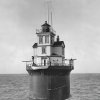Six years ago, Harvey Waltersdorf built a small dock at his Rehoboth Beach home off the west end Silver Lake. He also purchased a canoe and for three years enjoyed taking it out on the lake.
But over the last three years, the west end of Silver Lake has turned into a muddy swamp.
“In ’05 when I built this pier, we had plenty of water. Water would have been up over those bulkheads over there. Water was way up there near where that opening is. Now this is just all swamp,” Waltersdorf said,
He said he and his neighbors can barely get their kayaks, canoes and dingys in the water anymore the water is so shallow. Waltersdorf said the water was only about four inches deep for 15-20 feet out from his dock.
“We used to have a good time here. The last three or four years I haven’t been able to get the canoe out,” he said.
Waltersdorf blames the shallowness at the west end of the lake on a weir, or dam, that was put up on the east end after residents there complained about water getting into their basements.
Waltersdorf said the thunderstorm on July 8 has helped raise the levels of the lake a bit.
Sallie Forman, president of Save Our Lakes Alliance3 (SOLA3), said the conditions on Silver Lake are not great. She said the combination of shallow water and extreme heat are conditions ripe for algae blooms. Forman said with those conditions, which cut off the oxygen supply for fish, it is just a matter of time before a fish kill. The last fish kill on Silver Lake, three years ago, was also due to algae buildup.
“It’s a problem waiting to happen,” she said.
Waltersdorf said before the July 8 storm, the algae was noticeable near the Tot Lot.
“It’s got a bad odor. That’s a kid’s playground over there. It’s not a healthy thing,” he said.
Rehoboth Mayor Sam Cooper and Forman both said the shallow conditions were due sediment buildup and dry weather over a period of time.
Ownership of the lake has always been a murky question. Silver Lake lies in three jurisdictions: Rehoboth, Sussex County and Dewey Beach. Last May, Department of Natural Resources and Environmental Control Secretary Collin O’Mara formed the Silver Lake Task Force, which includes DNREC officials, Forman, Cooper, Rehoboth Commissioner Stan Mills, Rep. Pete Schwartzkopf, D-Rehoboth Beach and Sen. George Bunting, D-Bethany Beach.
The task force, which is ostensibly the governing body over the lake, recommended a plan to remove 5,000 cubic yards of sediment that have accumulated on the west end to a depth of three feet.
Chuck Williams of DNREC, writing in SOLA3’s newsletter, said the dredging would begin at the southeast, past the footbridge to the Rehoboth Elementary School, until reaching the area at the west end that is three feet deep. Removing the sediment mechanically, a contractor would set up at the Stockley Street park area and use a 60-foot boom hydraulic excavator to dredge as much sediment as possible.
Once there is enough room to operate, the contractor would bring in a barge mounted excavator and two Hopper dredges to complete the work.
Cooper said Forman requested an appropriation from the General Assembly to do the work, but no funding was provided in the spring session.
Forman said there has been a $275,000 proposal for the dredging, but that the project will more likely cost around $300,000. The extra cost would be used to refurbish the Silver Lake park staging ground to its original state once the project is finished, Forman said.
She said funding is the biggest obstacle, with the bulk of, if not all the money to come from the state. Forman said hopefully some money from the state’s capital improvement bill would go towards the project. If the state does not provide all the funds, Forman said she would then look to get grant money
Removing the sediment from Silver Lake was part of Rehoboth’s comprehensive development plan and the city has taken some steps. Cooper said the city has planted a riparian buffer zone at the Stockley Street park and restored eroded shoreline on East Lake Drive.
Rehoboth has also installed two Stormceptors in drainpipes leading into the lake. The Stormceptors catch sediment, liquids, oil, gravel and sand and prevent them from going in the lake. A Stormceptor is basically a concrete tank placed into the pipes; sediment flows to the bottom, oil flows to the top and clean water passes through the middle.
Officials from DNREC released a prepared statement from Frank Piorko of the department’s Division of Shoreline and Waterway Management.
The statement said that after receiving complaints of low water levels and environmental concerns from landowners at the west end of the lake, Piorko and Williams met with residents to discuss the options at the lake.
“The Division of Watershed Stewardship is working with other DNREC staff to research ownership and easement issues as well as previous efforts to manage the lake’s water level. A meeting will be scheduled in the next few weeks to discuss sediment management and overall lake management with the residents as the review of existing information is completed,” the statement said.
DNREC officials would not comment further.
Ryan Mavity covers Milton and the court system. He is married to Rachel Swick Mavity and has two kids, Alex and Jane. Ryan started with the Cape Gazette all the way back in February 2007, previously covering the City of Rehoboth Beach. A native of Easton, Md. and graduate of Towson University, Ryan enjoys watching the Baltimore Ravens, Washington Capitals and Baltimore Orioles in his spare time.

















































